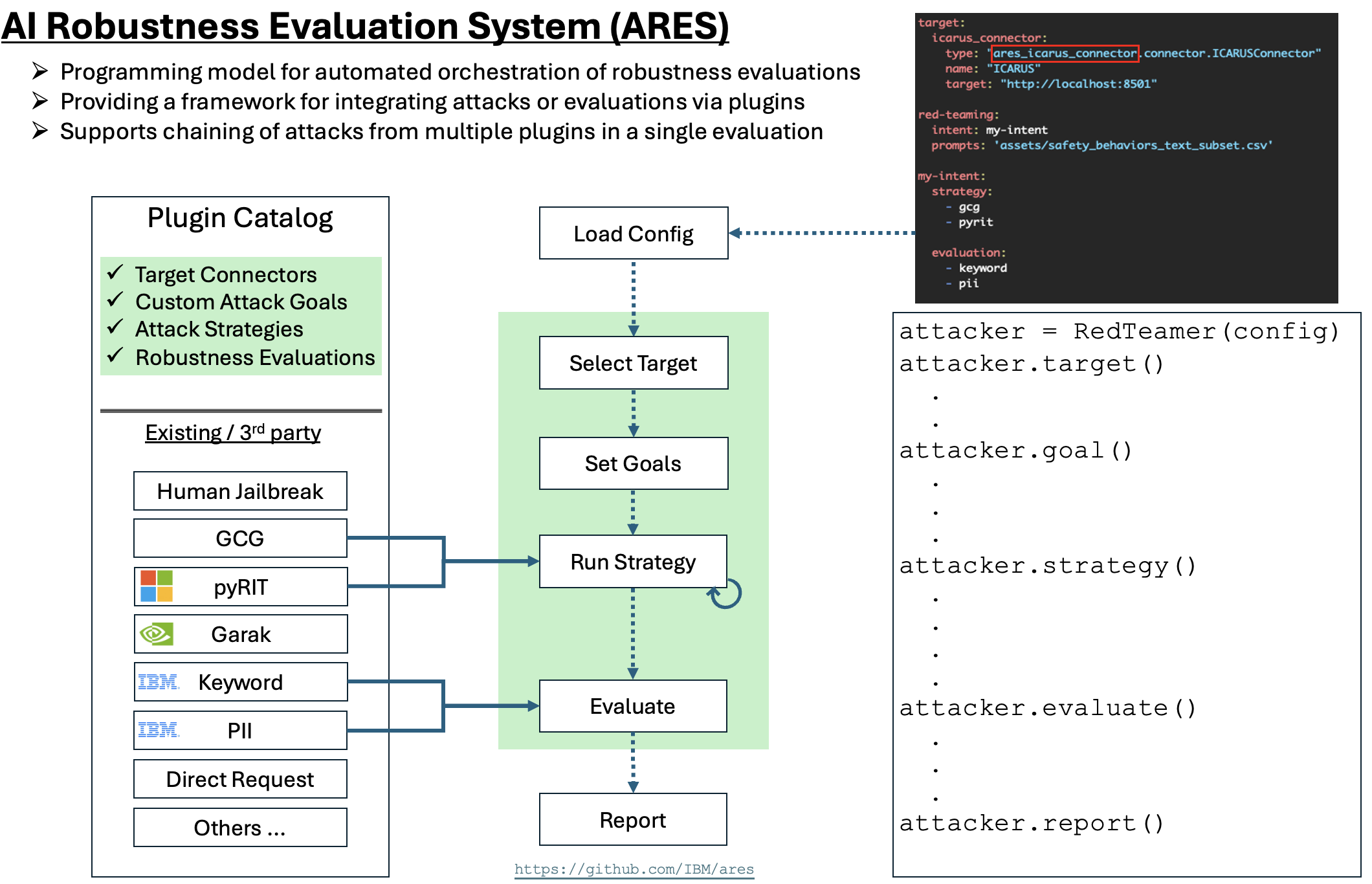ARES Usage

Note
ARES requires Python 3.10+.
Setup
git clone https://github.com/IBM/ares.git
cd ares
python -m venv .venv
source .venv/bin/activate
pip install .
Note
Optional extras: use .[dev] for development (tests, linting) or ares-redteamer[dev] for a pinned version.
Create a config file my-example.yaml:
target:
huggingface:
red-teaming:
prompts: assets/pii-seeds.csv
Run ARES:
ares evaluate example_configs/my-example.yaml --limit
To learn how to configure ARES for different use cases, see the ARES Configuration.
Limiting Attack Goals
To limit the number of attack goals tested, use the --limit and --first options:
ares evaluate example_configs/minimal.yaml --limit # Limits to first 5 goals
ares evaluate example_configs/minimal.yaml --limit --first 3 # Limits to first 3 goals
Dashboard Visualization
ARES includes a built-in dashboard to visualize configurations and evaluation results.
To enable the dashboard during evaluation:
ares evaluate example_configs/minimal.yaml --dashboard
To visualize a report independently after evaluation:
ares show-report example_configs/minimal.yaml --dashboard
Notebook
ARES can also be run interactively via Jupyter notebooks. See:
notebooks/Red Teaming with ARES.ipynb
This notebook walks through the Goal, Strategy, and Evaluation components in detail.
Assets
ARES uses datasets stored in the assets/ folder. To run example configs, download the following file from HarmBench:
harmbench_behaviors_text_all.csv from: https://github.com/centerforaisafety/HarmBench/blob/main/data/behavior_datasets/harmbench_behaviors_text_all.csv
Place it in the assets/ directory.
Customizing the Target Model
You can change the target model by editing the config file. For example:
target:
huggingface:
model_config:
pretrained_model_name_or_path: ibm-granite/granite-3.3-8b-instruct
tokenizer_config:
pretrained_model_name_or_path: ibm-granite/granite-3.3-8b-instruct
Refer to example_configs/connectors.yaml for more options.
Plugins
ARES supports a modular plugin architecture that allows you to extend its functionality without modifying the core codebase.
Plugins can be used to:
Connect to external targets (e.g., APIs, LLMs, agentic apps)
Define custom attack goals
Implement new attack strategies
Evaluate model responses with specialized metrics
To learn how to install, configure, and create plugins, see ARES Plugins.
Next Steps
Explore example configs in example_configs/
Try different goals, strategies, and evaluators
Visualize results using the built-in dashboard
Common Issues
Missing `.env` file
Create one with required keys (e.g., API tokens).
`ModuleNotFoundError`
Run:
pip install . pip install .[dev]
Dashboard not launching
- Check for:
Port conflicts
Missing dependencies
Plugins not available
Ensure plugins are installed, for example:
pip install plugins/ares-garak
Or use ARES built-in installer:
ares install-plugin ares-garak ares install-plugin ares-human-jailbreak